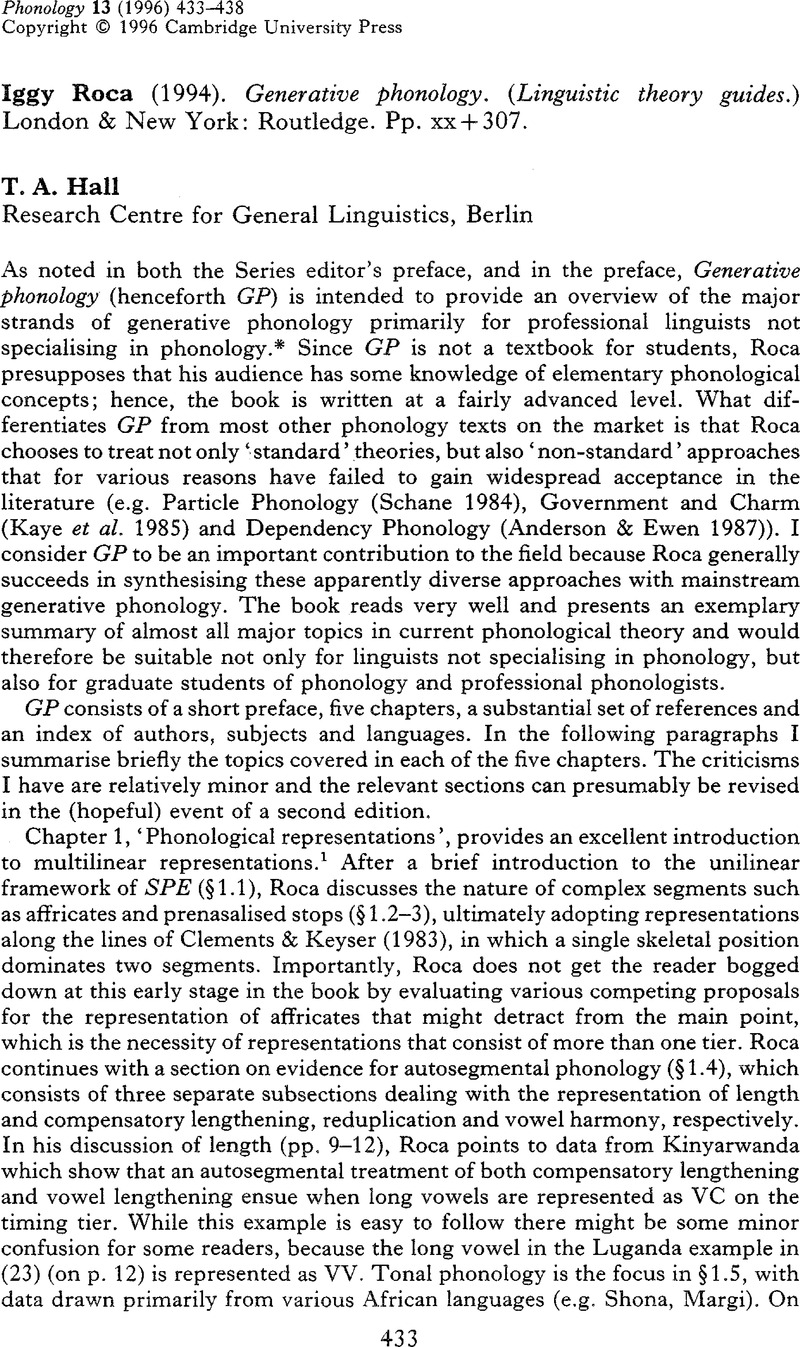No CrossRef data available.
Article contents
Iggy Roca (1994). Generative phonology. (Linguistic theory guides.)London & New York: Routledge. Pp. xx + 307.
Published online by Cambridge University Press: 14 June 2010
Abstract
An abstract is not available for this content so a preview has been provided. Please use the Get access link above for information on how to access this content.

- Type
- Reviews
- Information
- Copyright
- Copyright © Cambridge University Press 1996
References
REFERENCES
Anderson, J. & Ewen, C. (1987). Principles of dependency phonology. Cambridge: Cambridge University Press.CrossRefGoogle Scholar
Archangeli, D. & Pulleyblank, D. (1994). Grounded phonology. Cambridge, Mass.: MIT Press.Google Scholar
Clements, G. N. & Keyser, S. J. (1983). CV phonology: a generative theory of the syllable. Cambridge: MIT Press.Google Scholar
Kaisse, E. (1985). Connected speech: the interaction of syntax and phonology. New York: Academic Press.Google Scholar
Kaye, J., Lowenstamm, J. & Vergnaud, J.-R. (1985). The internal structure of phonological elements: a theory of charm and government. Phonology Yearbook 2. 305–328.CrossRefGoogle Scholar
Leben, W. (1978). The representation of tone. In Fromkin, V. (ed.) Tone: a linguistic survey. New York: Academic Press. 177–219.Google Scholar
McCarthy, J. & Taub, A. (1992). Review of Paradis, C. & Prunet, J.-F. (eds.) (1991). The special status of coronals: internal and external evidence. New York: Academic Press. Phonology 9. 363–370.Google Scholar
Mester, R. A. (1988). Dependent ordering and the OCP. In van der Hulst, H. & Smith, N. (eds.) Features, segmental structure and harmony processes. Part 1. Dordrecht: Foris. 128–144.Google Scholar
Myers, S. (1987). Tone and the structure of words in Shona. PhD dissertation, University of Massachusetts, Amherst.Google Scholar
Sagey, E. (1986). The representation of features and relations in nonlinear phonology. PhD dissertation: MIT.Google Scholar
Schane, S. (1984). The fundamentals of particle phonology. Phonology Yearbook 1. 129–155.CrossRefGoogle Scholar
Steriade, D. (1995). Underspecification and markedness. In Goldsmith, J. (ed.) The handbook of phonological theory. Cambridge, Mass. & Oxford: Blackwell. 114–174.Google Scholar
Vago, R. (1980). The sound pattern of Hungarian. Washington, DC: Georgetown University Press.Google Scholar
Vennemann, T. & Ladefoged, P. (1971). Phonetic features and phonological features. Lingua 32. 61–74.Google Scholar




